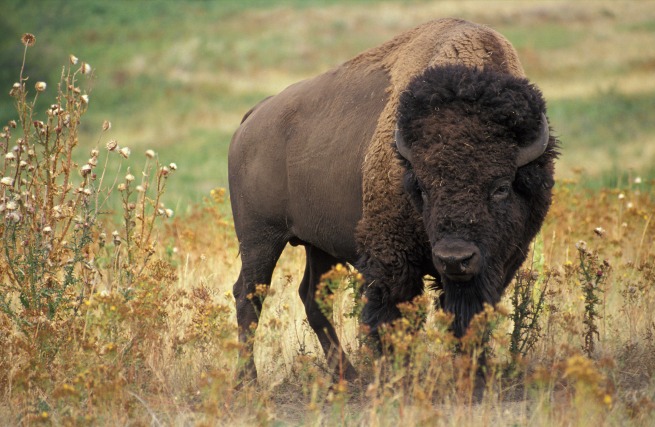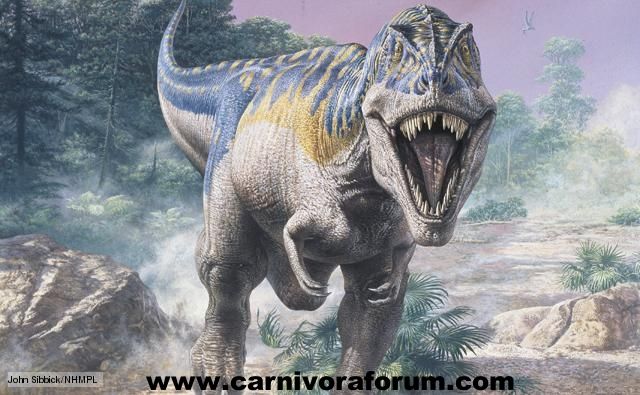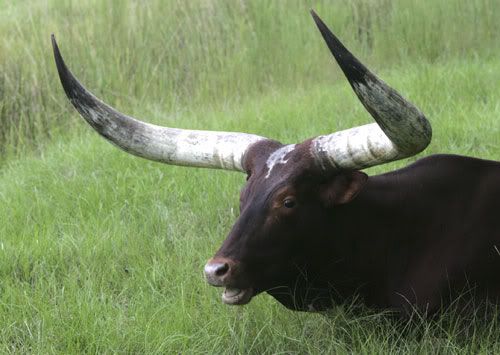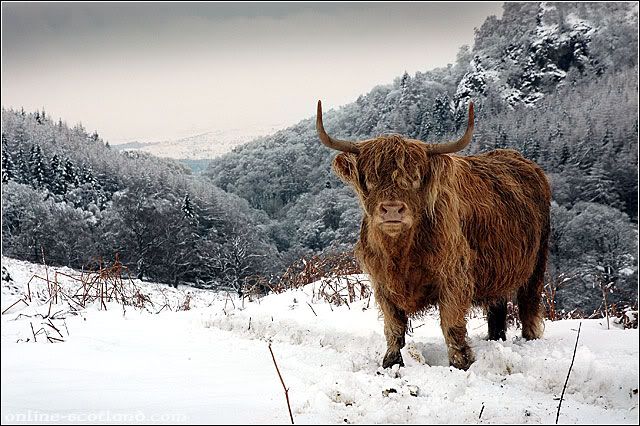Post by DinosaurMichael on Mar 12, 2012 8:56:32 GMT -5
Kodiak Bear - Ursus arctos middendorffi
The Kodiak bear (Ursus arctos middendorffi), also known as the Kodiak brown bear or the Alaskan grizzly bear or American brown bear, occupies the islands of the Kodiak Archipelago in South-Western Alaska. Its name in the Alutiiq language is Taquka-aq. It is the largest subspecies of brown bear. Few Kodiak bears have been weighed in the wild, so some of the weights are estimates. Size range for females is from 225 kg (500 lbs) to 315 kg (700 lbs) and for males 360 kg (800 lbs) to 635 kg (1400 lbs). Mature males average 480–533 kg (1,058–1,175 lb) over the course of the year, and can weigh up to 680 kg (1500 lbs) at peak times. Females are typically about 20% smaller and 30% lighter than males and adult sizes are attained when bears are 6 years old. Bears weigh the least when they emerge from their dens in the spring, and can increase their weight by 20–30% during late summer and fall. Bears in captivity can sometimes attain weights considerably greater than those of wild bears. An adult male Kodiak bear stands up to 1.5 m (5 ft) tall at the shoulder when it is standing on all four legs. When standing fully upright on its hind legs, a large male could reach a height of 3 m (10 ft). The largest Kodiak bear on record grew in captivity and died in the Cheyenne Mountain Zoo in December 1955, weighing 757 kg (1670 lb). They are the largest brown bear subspecies, and are comparable in size to polar bears. That makes Kodiak bears and polar bears both the two largest members of the bear family and the two largest extant wholly terrestrial carnivores. The standard method of evaluating the size of bears is by measuring their skulls. Most North American hunting organizations and management agencies use calipers to measure the length of the skull (back of sagittal crest on the back of the skull to the front tooth) and the width (maximum width between the zygomatic arches — “cheek bones”). The total skull size is the sum of these two measurements. The largest bear ever killed in North America was from Kodiak Island with a total skull size of 78.1 cm (30.75 in), and 8 of the top 10 brown bears listed in the Boone and Crockett record book are from Kodiak. The average skull size of Kodiak bears that were killed by hunters in the first five years of the 21st century was 63.8 cm (25.1 in) for boars and 55.4 cm (21.8 in) for sows. Although the term “Kodiak bear” is widely used to include all coastal Alaska brown bears, the subspecies only occurs on the islands of the Kodiak Archipelago (Kodiak, Afognak, Shuyak, Raspberry, Uganik, Sitkalidak, and adjacent islands). The Kodiak bear population was estimated to include 3,526 bears in 2005, yielding an estimated archipelago-wide population density of 0.7 bears/square mile (271.2 bears/1000 km²). During the past decade the population has been slowly increasing.

American Bison - Bison bison
The American bison (Bison bison), also commonly known as the American buffalo, is a North American species of bison that once roamed the grasslands of North America in massive herds. Their range once roughly comprised a triangle between the Great Bear Lake in Canada's far northwest, south to the Mexican states of Durango and Nuevo León, and east along the western boundary of the Appalachian Mountains. Because of commercial hunting and slaughter in the 19th century, the bison nearly went extinct and is today restricted to a few national parks and other reserves. Two subspecies or ecotypes have been described: the plains bison (Bison bison bison), smaller in size and with a more rounded hump, and the wood bison (Bison bison athabascae) – the larger of the two and having a taller, square hump. Furthermore, it has been suggested that the plains bison consists of a northern (Bison bison montanae) and a southern subspecies, bringing the total to three. However, this is generally not supported. The wood bison is one of the largest species of bovid in the world, surpassed by only the Italian Chianina, the Asian gaur and wild Asian water buffalo. It is the largest extant land animal in North America. A bison has a shaggy, long, dark brown winter coat, and a lighter weight, lighter brown summer coat. As is typical in ungulates, the male bison are slightly larger than the female. Plains bison are often in the smaller range of sizes, and Wood bison in the larger range. Head-and-body length ranges from 2 to 3.5 m (6.6 to 11.5 ft) long, the tail adding 30 to 91 cm (12 to 36 in). Shoulder height in the species can range from 152 to 186 cm (60 to 73 in). Typical weigh can range from 318 to 1,000 kg (700 to 2,200 lb). The heaviest wild bull ever recorded weighed 1,270 kg (2,800 lb). When raised in captivity and farmed for meat, the bison can grow unnaturally heavy and the largest semi-domestic bison weighed 1,724 kg (3,800 lb). The heads and forequarters are massive, and both sexes have short, curved horns that can grow up to 2 feet (61 cm) long, which they use in fighting for status within the herd and for defense. Bison are herbivores, grazing on the grasses and sedges of the North American prairies. Their daily schedule involves two-hour periods of grazing, resting and cud chewing, then moving to a new location to graze again. Bison mate in August and September; gestation is 285 days. A single reddish-brown calf nurses until the next calf is born. If the cow is not pregnant, a calf will nurse for 18 months. Bison cows are mature enough to produce a calf at 3 years of age. Bison bulls may try to mate with cows at 3 years of age, but if more mature bulls are present, they may not be able to compete until they reach 5 years of age. Bison have a life expectancy of approximately 15 years in the wild and up to 25 years in captivity.

The Kodiak bear (Ursus arctos middendorffi), also known as the Kodiak brown bear or the Alaskan grizzly bear or American brown bear, occupies the islands of the Kodiak Archipelago in South-Western Alaska. Its name in the Alutiiq language is Taquka-aq. It is the largest subspecies of brown bear. Few Kodiak bears have been weighed in the wild, so some of the weights are estimates. Size range for females is from 225 kg (500 lbs) to 315 kg (700 lbs) and for males 360 kg (800 lbs) to 635 kg (1400 lbs). Mature males average 480–533 kg (1,058–1,175 lb) over the course of the year, and can weigh up to 680 kg (1500 lbs) at peak times. Females are typically about 20% smaller and 30% lighter than males and adult sizes are attained when bears are 6 years old. Bears weigh the least when they emerge from their dens in the spring, and can increase their weight by 20–30% during late summer and fall. Bears in captivity can sometimes attain weights considerably greater than those of wild bears. An adult male Kodiak bear stands up to 1.5 m (5 ft) tall at the shoulder when it is standing on all four legs. When standing fully upright on its hind legs, a large male could reach a height of 3 m (10 ft). The largest Kodiak bear on record grew in captivity and died in the Cheyenne Mountain Zoo in December 1955, weighing 757 kg (1670 lb). They are the largest brown bear subspecies, and are comparable in size to polar bears. That makes Kodiak bears and polar bears both the two largest members of the bear family and the two largest extant wholly terrestrial carnivores. The standard method of evaluating the size of bears is by measuring their skulls. Most North American hunting organizations and management agencies use calipers to measure the length of the skull (back of sagittal crest on the back of the skull to the front tooth) and the width (maximum width between the zygomatic arches — “cheek bones”). The total skull size is the sum of these two measurements. The largest bear ever killed in North America was from Kodiak Island with a total skull size of 78.1 cm (30.75 in), and 8 of the top 10 brown bears listed in the Boone and Crockett record book are from Kodiak. The average skull size of Kodiak bears that were killed by hunters in the first five years of the 21st century was 63.8 cm (25.1 in) for boars and 55.4 cm (21.8 in) for sows. Although the term “Kodiak bear” is widely used to include all coastal Alaska brown bears, the subspecies only occurs on the islands of the Kodiak Archipelago (Kodiak, Afognak, Shuyak, Raspberry, Uganik, Sitkalidak, and adjacent islands). The Kodiak bear population was estimated to include 3,526 bears in 2005, yielding an estimated archipelago-wide population density of 0.7 bears/square mile (271.2 bears/1000 km²). During the past decade the population has been slowly increasing.
American Bison - Bison bison
The American bison (Bison bison), also commonly known as the American buffalo, is a North American species of bison that once roamed the grasslands of North America in massive herds. Their range once roughly comprised a triangle between the Great Bear Lake in Canada's far northwest, south to the Mexican states of Durango and Nuevo León, and east along the western boundary of the Appalachian Mountains. Because of commercial hunting and slaughter in the 19th century, the bison nearly went extinct and is today restricted to a few national parks and other reserves. Two subspecies or ecotypes have been described: the plains bison (Bison bison bison), smaller in size and with a more rounded hump, and the wood bison (Bison bison athabascae) – the larger of the two and having a taller, square hump. Furthermore, it has been suggested that the plains bison consists of a northern (Bison bison montanae) and a southern subspecies, bringing the total to three. However, this is generally not supported. The wood bison is one of the largest species of bovid in the world, surpassed by only the Italian Chianina, the Asian gaur and wild Asian water buffalo. It is the largest extant land animal in North America. A bison has a shaggy, long, dark brown winter coat, and a lighter weight, lighter brown summer coat. As is typical in ungulates, the male bison are slightly larger than the female. Plains bison are often in the smaller range of sizes, and Wood bison in the larger range. Head-and-body length ranges from 2 to 3.5 m (6.6 to 11.5 ft) long, the tail adding 30 to 91 cm (12 to 36 in). Shoulder height in the species can range from 152 to 186 cm (60 to 73 in). Typical weigh can range from 318 to 1,000 kg (700 to 2,200 lb). The heaviest wild bull ever recorded weighed 1,270 kg (2,800 lb). When raised in captivity and farmed for meat, the bison can grow unnaturally heavy and the largest semi-domestic bison weighed 1,724 kg (3,800 lb). The heads and forequarters are massive, and both sexes have short, curved horns that can grow up to 2 feet (61 cm) long, which they use in fighting for status within the herd and for defense. Bison are herbivores, grazing on the grasses and sedges of the North American prairies. Their daily schedule involves two-hour periods of grazing, resting and cud chewing, then moving to a new location to graze again. Bison mate in August and September; gestation is 285 days. A single reddish-brown calf nurses until the next calf is born. If the cow is not pregnant, a calf will nurse for 18 months. Bison cows are mature enough to produce a calf at 3 years of age. Bison bulls may try to mate with cows at 3 years of age, but if more mature bulls are present, they may not be able to compete until they reach 5 years of age. Bison have a life expectancy of approximately 15 years in the wild and up to 25 years in captivity.








